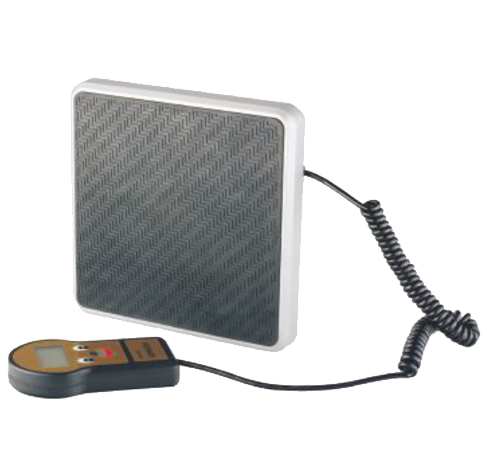Aug 08, 2025
At its core, a Refrigeration Electronic Scale is a weighing device specifically designed to measure the amount of refrigerant being added to or removed from a cooling system. Unlike general-purpose scales, the Refrigeration Electronic Scale is built to withstand exposure to refrigerants and is calibrated to provide consistent readings that meet industry standards. It typically includes a digital display, a rugged platform for holding refrigerant tanks, and a flexible cord that connects the weighing base to the readout.

One of the key reasons for the widespread use of the Refrigeration Electronic Scale is its accuracy. Refrigerant charging must be done according to the exact specifications provided by system manufacturers. Both overcharging and undercharging can cause system inefficiency, potential damage to compressors, or even environmental hazards. The Refrigeration Electronic Scale helps technicians stay within the recommended range, often allowing for measurements accurate to within a few grams.
From an operational standpoint, the Refrigeration Electronic Scale simplifies the process of refrigerant handling. Many models are equipped with features like tare functions, automatic shut-off, and real-time display updates. These make it easier for technicians to monitor refrigerant flow and stop the process exactly at the desired weight. This reduces waste and increases efficiency in servicing HVACR units.
Another important perspective is portability and durability. The Refrigeration Electronic Scale is often used in field environments, so it needs to be compact and sturdy. Many designs come with protective cases and battery-powered operation, allowing them to be used in both indoor and outdoor settings. This makes the Refrigeration Electronic Scale a versatile tool for contractors and service providers working on residential, commercial, or industrial systems.
In recent years, technological advancements have expanded the functionality of the Refrigeration Electronic Scale. Some models now include Bluetooth connectivity, allowing them to communicate with mobile apps or other smart devices. This helps in data logging, remote monitoring, and improved documentation. A technician using a modern Refrigeration Electronic Scale can now save measurements digitally, reducing the chance of manual error and improving overall workflow efficiency.
Environmental considerations have also contributed to the importance of the Refrigeration Electronic Scale. With increased focus on controlling emissions of greenhouse gases, especially refrigerants that can deplete the ozone layer or contribute to global warming, accurate refrigerant charging is more important than ever. Regulations in many countries now require proper logging of refrigerant usage, and the Refrigeration Electronic Scale provides the accuracy needed to meet these requirements.
From a training and education standpoint, the Refrigeration Electronic Scale is an important teaching tool in HVACR programs. Students are taught to rely on this device when learning how to properly charge and recover refrigerants. Its consistent use promotes practices in the industry and reinforces the importance of safety, efficiency, and compliance with environmental guidelines.
In industrial settings, the Refrigeration Electronic Scale is often used in conjunction with automated charging systems. Here, it becomes part of a larger process where refrigerant is dispensed in controlled volumes. These setups may be found in manufacturing lines for refrigeration equipment, where the Refrigeration Electronic Scale is essential in ensuring every unit receives an identical charge, supporting both quality control and regulatory compliance.
It is also worth noting the economic impact. By using a Refrigeration Electronic Scale, businesses can avoid costly service callbacks due to improper refrigerant levels. The tool minimizes excess use of refrigerants, which can be expensive, especially newer alternatives to traditional chemicals. This results in a more efficient use of resources and reduces the overall cost of maintenance.